Capitol Reef National Park: the Rim Overlook Trail
6 Comments
Among the cornucopia of natural environments found on the American continent, maybe the most unusual are those of the Colorado Plateau, where a convergence of geology and climate has created landscapes without equal anywhere else. When asked about my favorite national parks, I’ve always felt the list would not be complete without one of the nine parks on the Colorado Plateau. Up until ten years ago, that choice was invariably Capitol Reef National Park. One of the reasons I liked the park so much was the opportunity to discover fantastic landscapes removed from the crowds in a relatively easy way, such as at the Strike Valley Overlook. You have be willing to leave the pavement, but you don’t need a particularly rugged vehicle: my Subarus of the 1990s – with less clearance than today’s models, were enough. In the last decade, I managed to travel more remote areas of Canyonlands, Grand Canyon, and Zion national park, so my fondness for them has grown, but Capitol Reef National Park retains its appeal. In this article, together with comments on photography, I will describe a favorite hike that shows that you don’t even have to venture away from the highway to appreciate what the park has to offer. Can a trail that is never more than a quarter-mile from a state highway as the bird flies offer a backcountry experience? Read on to find out.
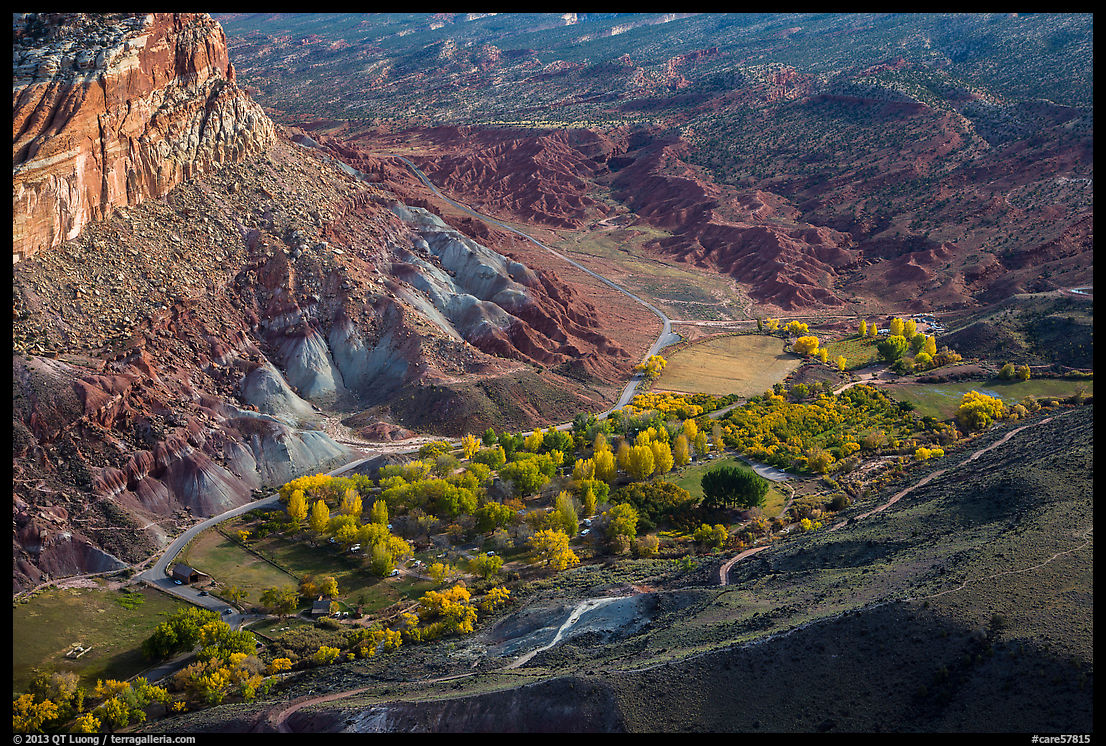
Less than a quarter-mile from the trailhead, the trail forks. The left branch takes you to the Hickman Natural Bridge, which will add a mile and half to the hike. They are well worth it, since the close views of the bridge are much better than those you will get from the Hickman Bridge Overlook on the Rim Overlook Trail from which the bridge merges into the surrounding cliffs. By the way, hiking only to the bridge and back is about 2 miles round-trip with 400 feet of elevation gain. The Hickman Bridge was named that way because it was shaped by flowing water unlike natural arches. Its size is quite impressive, at 125 feet high and 133 feet long. The bridge is ensconced among ridges, therefore is not particularly well lit at sunrise nor sunset. Morning light illuminates the bridge best because a ridge blocks the sun in midafternoon. The cramped location necessitated a wide-angle lens.
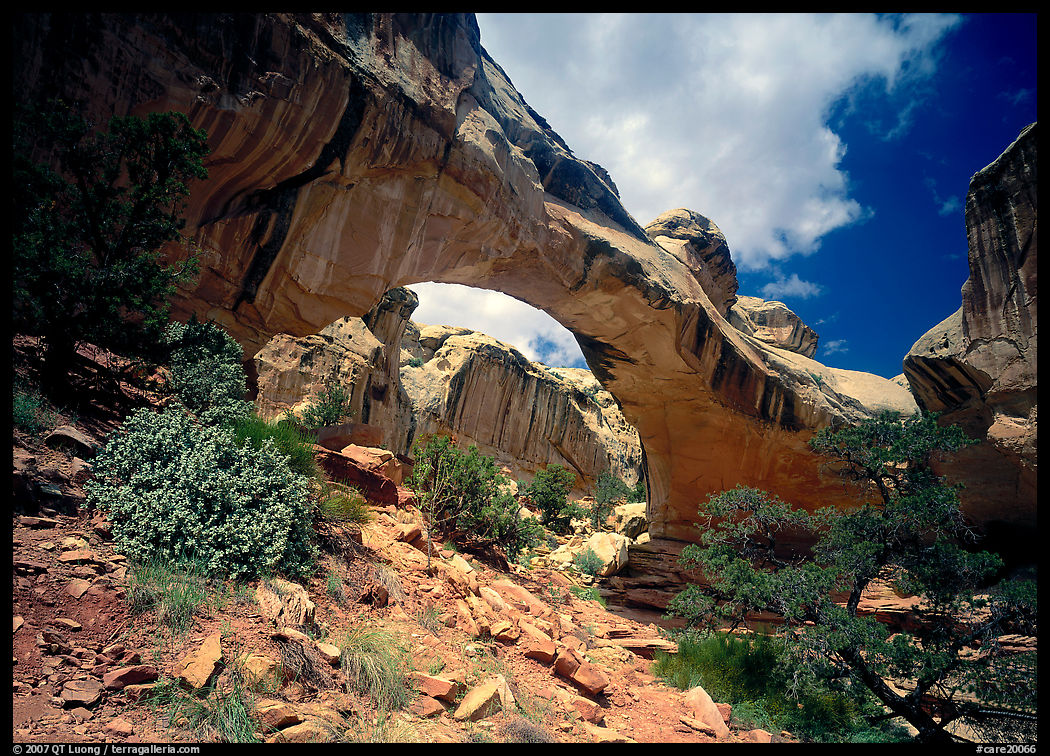
Since the trail makes a loop passing below the bridge, I could easily photograph both of its sides. I preferred looking downhill as the bridge framed a larger landscape. On days of variable cloudiness, if you don’t like the light conditions, you need to wait for a short amount of time for them change. I made my exposure when a passing cloud partly dimmed the sun light on and around the bridge. Its darker tones conferred visual mass to the span that both contrasted with the distant rock domes and stood out against the mid-tones of the cliff and ground, while the white cloud highlighted the space within the bridge and its lower edge.
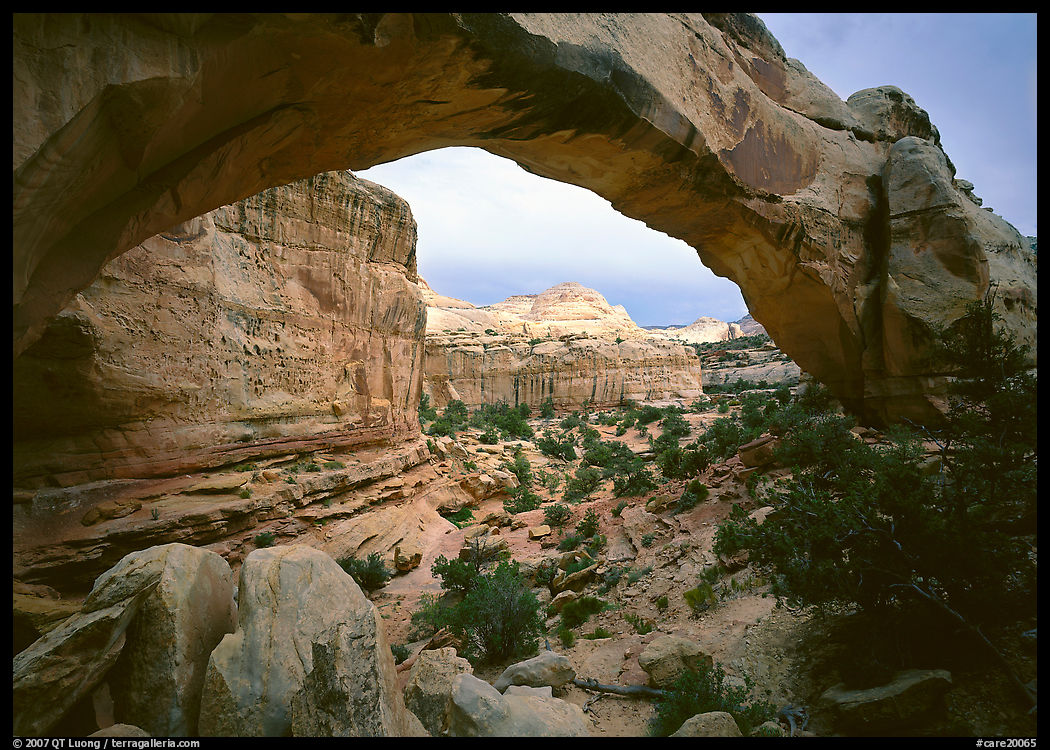
Besides the great views, I enjoyed the Rim Overlook Trail’s primitive atmosphere. It is narrow and unobtrusive, with several sections when you walk directly on slickrock, yet the hundreds of well-spaced cairns make it reasonably easy to follow. Hiking feels more adventurous than following a well-used path. The trail is steadily graded, so the 1,000-foot elevation difference from the trailhead felt easy to gain. That grade of about 15% corresponds to the monoclinal tilt of the Waterpocket Fold, which is plainly visible on the south rim across the Fremont River Canyon.
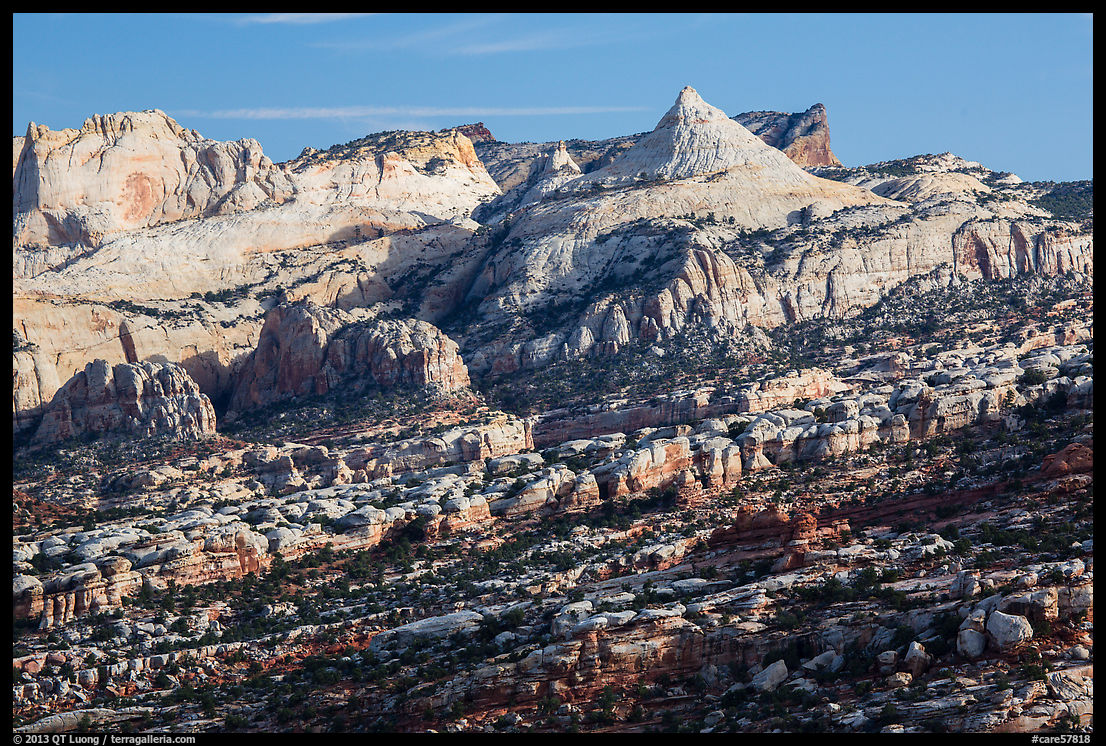
At 2.25 miles from the trailhead, I arrived at the Rim Overlook in the late afternoon. At that time of the day the cliffs of the Waterpocket fold are well lit. Located on the edge of the cliff with a vertiginous 1,000-foot drop, it offered a bird’s-eye view of the Fremont River Valley, the Fruita orchards, and the Gifford Homestead. One of the factors that differentiate Capitol Reef from other Southwest parks is the presence and accessibility of the fast-flowing Fremont River that gives rise to a delightful riparian habitat in the desert. During the month of October, the color accent created by the autumn foliage of the cottonwoods was striking. I photographed the wider view with the strongest possible light, when no clouds obscured the sun, so that the contrast and brightness of the landscape counterbalanced the sky. For a tighter view with the sky excluded, the softer light of a passing cloud brought some subtlety (see opening image).
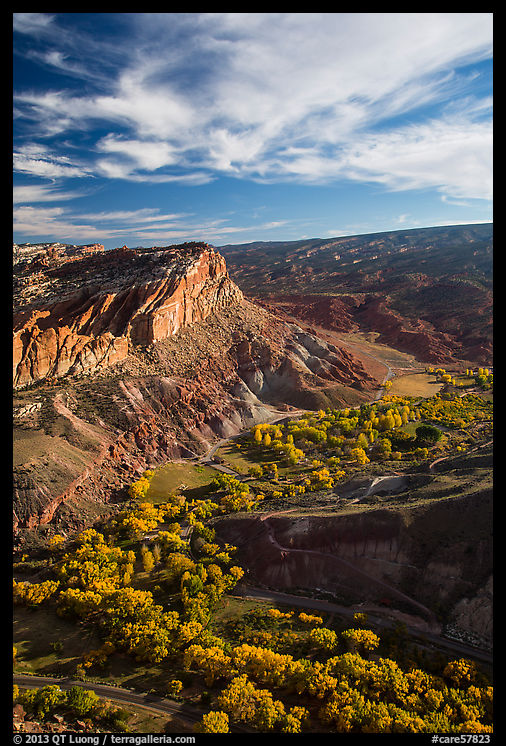
When traveling through the Southwest, I always enjoy staying at the campground located in the historic orchard. Their mature fruit trees provide a welcome respite from the rocky and dry landscape common in the region. As customary at overlooks, after photographing wide views, I switched to a telephoto lens to look for details in the landscape. Using my longest focal length of 400mm, I focussed on the pattern of fruit trees that exhibited more varied colors than the cottonwoods, using a composition based on diagonals for a dynamic image.
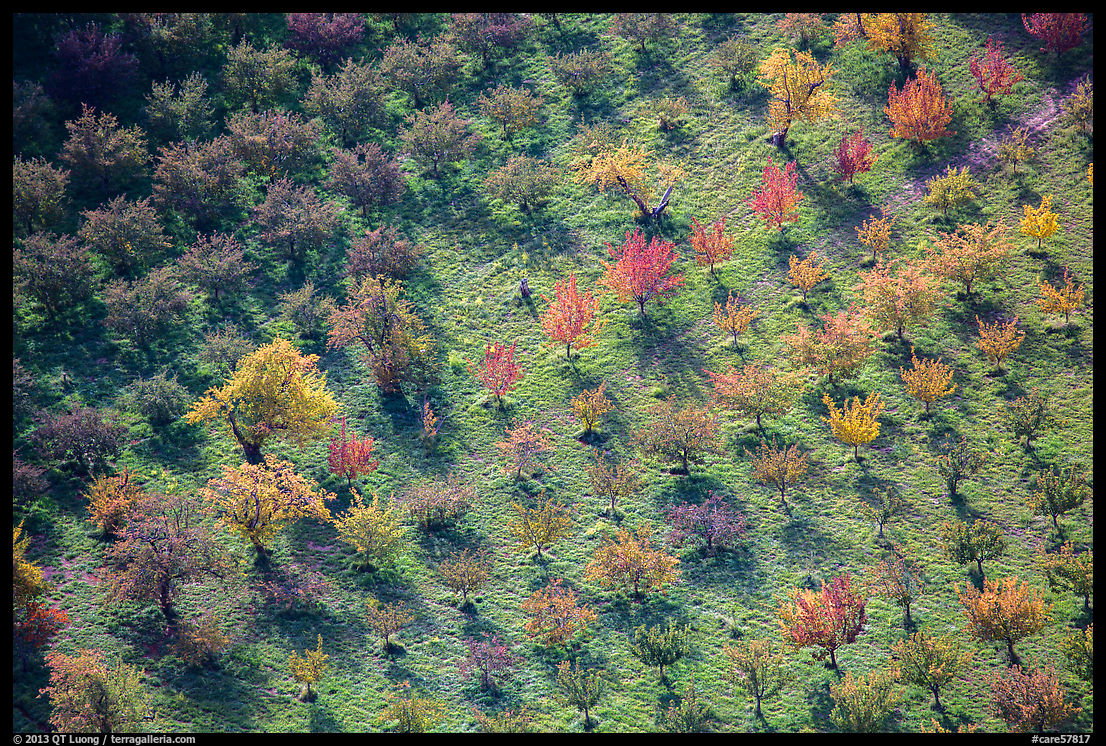
The trail continues for another 2.4 miles and 500 feet of elevation to the Navajo Knobs, a summit that offers an expansive 360-degree panorama. On my way to the Rim Overlook, I had noticed a striking peak called Pectol’s Pyramid on the south rim. After determining that the striking structure is best lit in the late afternoon, I had kept hiking, planning to photograph there on my way back. Since the trail was not only primitive, and therefore potentially tricky to follow in the dark, but also full of interesting details, on that day, instead of pushing forward to reach the Navajo Knobs near sunset time, I turned around. Although it is an out-and-back trail, I felt no monotony, as the view facing each direction was quite different. Walking back in the late afternoon, the sun lit brightly the Waterpocket Fold and white sandstone domes, one of which gave its name to the national park. Front lighting can lead to flatness and lack of perceived dimensionality, but this was remedied with the contrast in light bestowed by the shadow of a cloud.
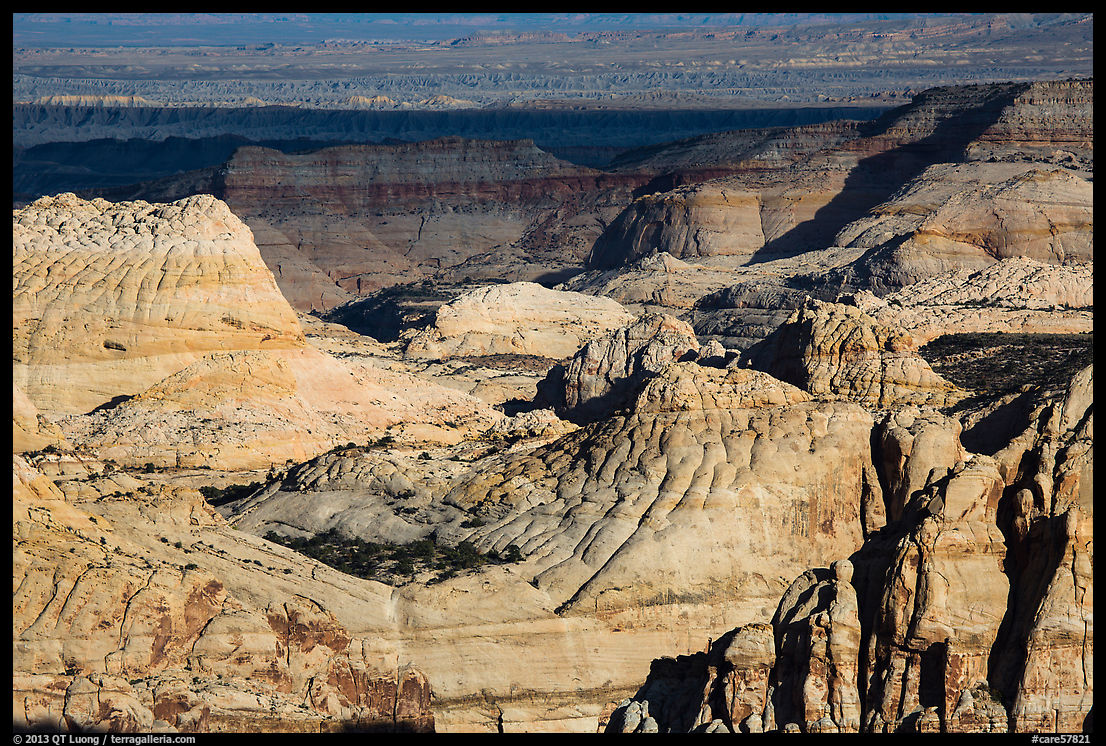
When framing Pectol’s Pyramid tightly, I timed the exposure for when the shadows from the setting sun were about to creep up the face. The maximal side-lighting and contrast from direct illumination emphasized the structure of the peak.
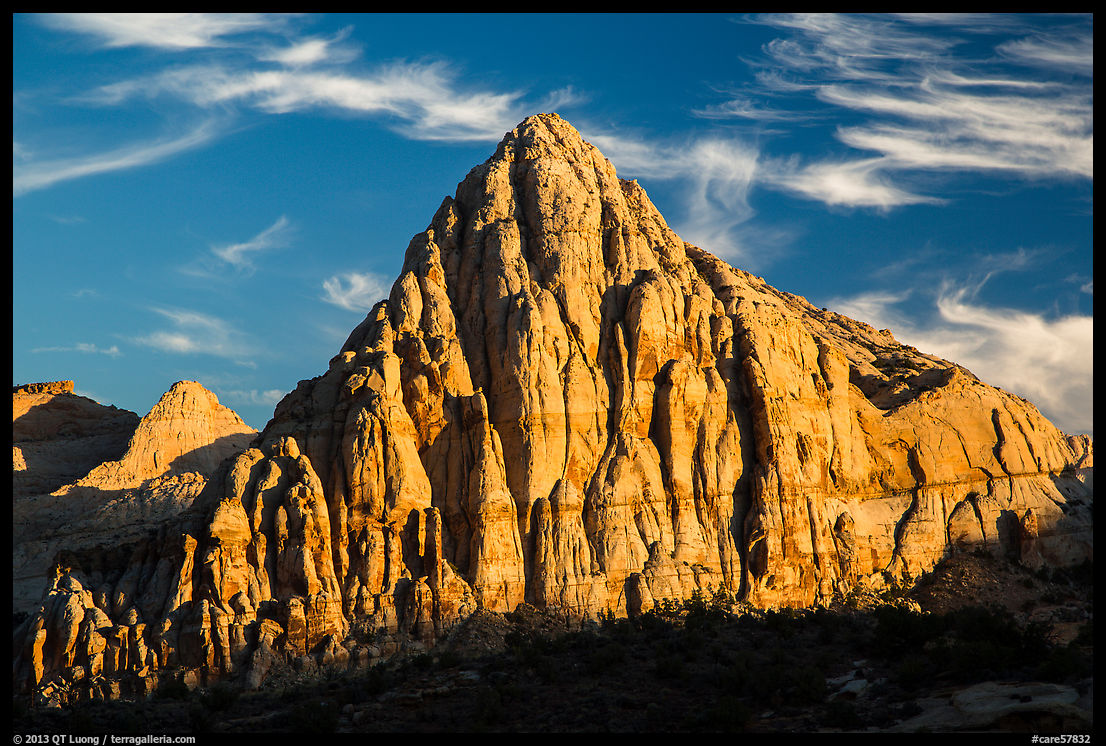
Less than a mile from the trailhead, the ground was littered with the curious black volcanic boulders found in many places in the park. In a wide-angle photograph, their dark and rounded shapes at the bottom contrasted with the sharp and light triangles of the Pectol’s Pyramid and other distant rock formation at the top. In the middle, the V-shape of the lighter rocks formed a light line linking both components. Immediately after sunset, the light was a bit flat, but fifteen minutes later, it regained some directionality. Yet, it was now even enough to reveal all elements of the picture, while before sunset the foreground would have lost in deep shadows.
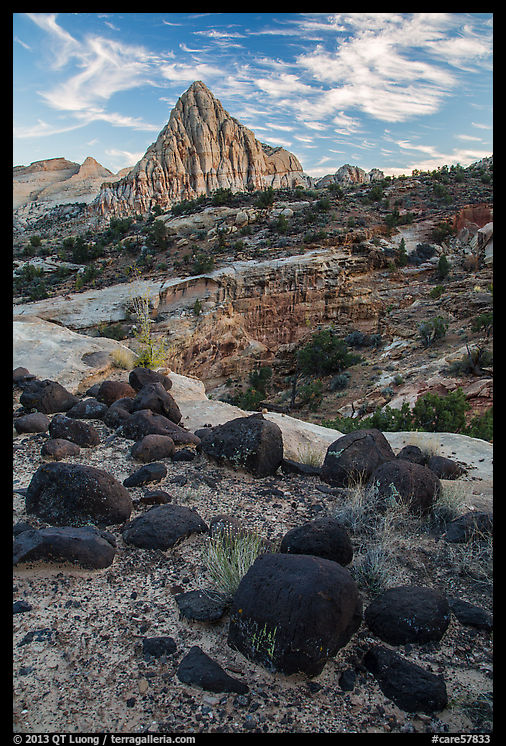
The trailhead for the hike is located just off UT-24 between Torrey and Hankville, 2 miles east of the visitor center, on the north side just before a bridge over the Fremont River. While it is in the national park, you don’t even have to pay an entrance fee. Despite its ease of access and moderate length, the Rim Overlook Trail remains my favorite in the park. Last time I visited, at the height of the fall colors, I hardly saw any others hikers on the trail. Despite its frontcountry position, I found the trail has retained a marked backcountry character.


Thanks for another interesting article and great photos. I’ve been there only once and only for a quick visit because of torrential rains most of the time. This will give me some ideas of what to look at and for.
Given the terrain and roads, torrential rains certainly make a visit difficult!
Looks like a really great place that I need to visit. Thanks for the article on it and beautiful photos.
Very nice images! I’ve only been there in late May. I’ll have to go back for the fall colors.
There is some nice vegetation thanks to the Fremont River and also in other canyons.
What a fascinating park, and beautiful images of it!
Thanks for sharing.
Christine